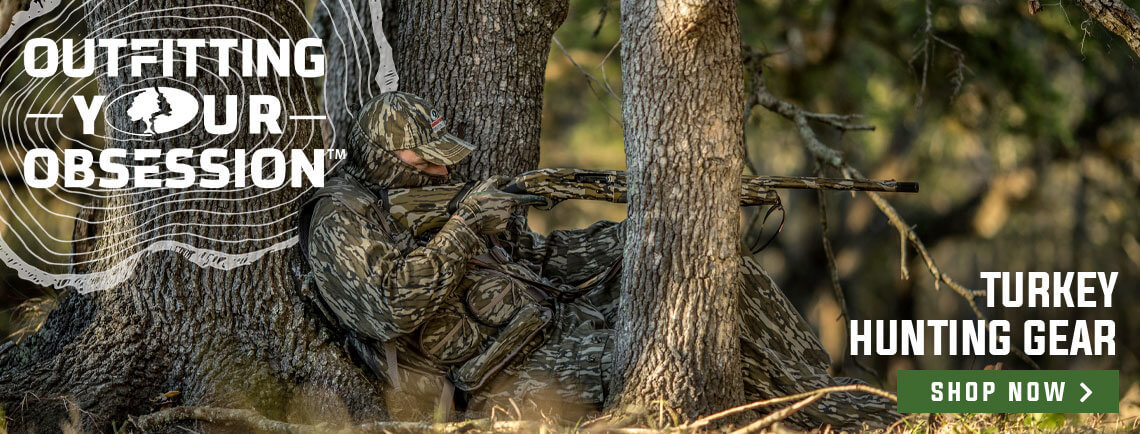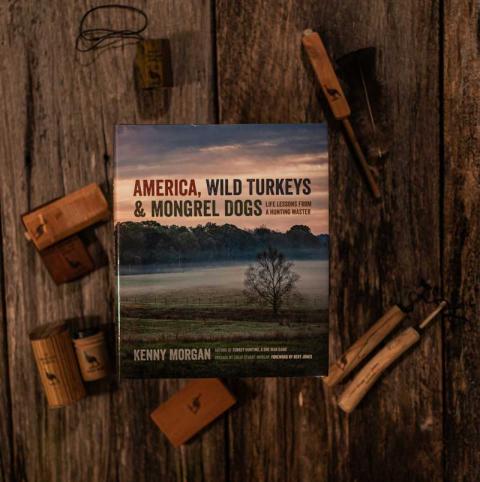Donald Devereaux Jarrett | Mossy Oak ProStaff
It was only the start of the second day that I had ventured into the prairie of South Dakota to tangle with the Merriam's wild turkey, and spring had obviously missed the memo. It resembled a winter wonderland as the snow that had already piled upwards of 6 inches overnight glowed in spite of the otherwise dark morning. It was apparent that it would continue to pile up throughout the day, but when you only have a few days to get it done, you have to play the hand you are dealt.
Once I was settled in at the base of a cluster of Burr Oaks, I waited for the appropriate time to raise a gobble. It was all new to me, hunting turkeys in the snow. Hunting anything in the snow was unheard of back in my home state of Georgia. It just didn't happen. I have to admit that I had little confidence in anything good coming of the hunt that cold, snowy morning in the prairie.
To my amazement, the turkeys gobbled pretty well and I managed to call in a four-pack of jakes. No long beards showed, but I had experienced something different that morning and had learned a little bit about hunting turkeys in the Missouri Breaks. The hunt lasted four days, and before it ended, I managed to kill two beautiful South Dakota Merriam's. I saw more turkeys on that four-day hunt than I had ever seen and I learned some things that have benefited me greatly over the course of the past 30 years.
Before I ever traveled to South Dakota to hunt turkeys, I had no idea what to expect. I envisioned the Black Hills scenery with Ponderosa Pines and scenic meadows, full of white-tipped strutters. It was a vision of spring serenity, gentle breezes and warm sunshine. Maybe such days do exist there, but I landed a hunt in the prairie, hours from the Black Hills and, apparently, several degrees south of warm and a knot or two above a gentle breeze. The Spring of the year is likely the most unpredictable of seasons, even more so on the South Dakota prairie. Combine that with and unpredictable bird and multiple variations of terrain and you have all the ingredients of a challenging turkey hunt.
Many people will claim that a Merriam's turkey is an easy bird to kill. They can be, but so can an Eastern or an Osceola or a Rio Grande. I would return to South Dakota the following year to begin guiding turkey hunters and I would eventually realize the most important thing about a Merriam's. They are just turkeys - nothing more, nothing less. With that in mind, there are some things you might want to consider if you plan to go after the Merriam's that call the prairie their home. The things I will mention are things that will add to the challenge that a wild turkey already presents.
Altitude: Here is a challenge that many don't consider when hunting the prairie of South Dakota, and rightfully so. There is no altitude to speak of on the prairie, but there are drainages to the Missouri River that will test your stamina to the max. What might appear to be nothing but flat land with few trees will turn into massive canyon descents into Cottonwood drainages. That is where the turkeys are. If you find a creek, look for the Cottonwood trees. That is where the turkeys will roost. Habitually, I might add.
Climate: If you plan to head to the South Dakota prairie, let's say in early to mid-April, be prepared for any kind of weather. I have seen opening day temps dip to 8 degrees and I have seen them rise to upwards of 90. "What's the normal temperature in the spring out there," I'm often asked. "That's about it," I'll say. You simply don't know. And if you don't like the weather, just wait a day. It'll change. Base layers are a typical dress code in the mornings, only to be shed by noon. Jackets return by late evening and by dark, you'll be ready to hug the heater of the truck when you get back to it.
Cold weather seems to have little effect on the Merriam's turkey. That 8-degree morning I mentioned above netted six birds for four of our hunters. They were gobbling like it was a warm spring day in Georgia.
The heat is another story, and here is another interesting curve ball the prairie will throw at you. Seventy degrees in Georgia, and a lot of other places across the country in the spring turkey woods, is pretty pleasant. On the wide-open prairie of South Dakota, however, 70 degrees is a scorcher. It can, and often does, shut the birds down. They will resort to loafing around in the shade, covering little to no ground for hours at the time. They also seem to lose interest in the calls and can be quite hard to deal with. You just have to wait until it cools back off. They will let you know when they are ready.
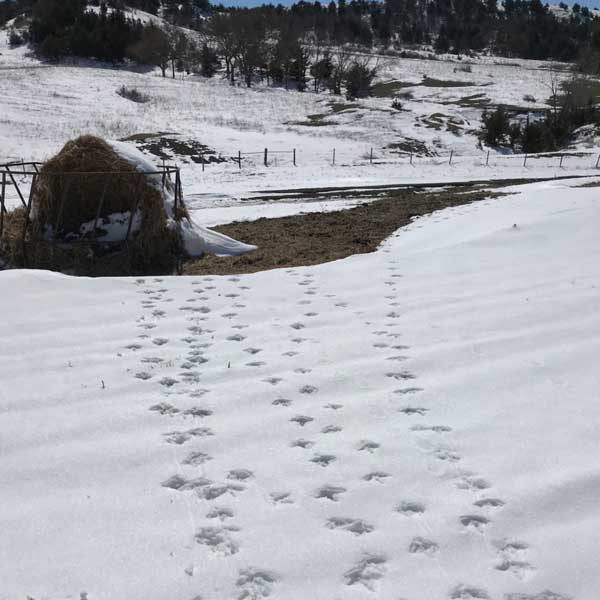
Snow: This is a tough one. Light snow is not a real problem, at least not for the turkeys. It can be a pain to get around in for the hunter, but if it's not too deep, Merriam's don't let it disrupt their routine too much.
When it's deep, it's not good for the hunter or the birds. I have seen turkeys sit on the roost for a couple of days when the snow gets deep. They are safer there. They might fly straight down and scratch a few minutes beneath the roost, then fly right back up. Rarely, have I ever encountered a Merriam's turkey on the prairie of South Dakota more than 100 yards from the roost on days with heavy snow.
The best advice I can give you is wait until the next day, or the first day the morning breaks with some sunshine in it and the temperatures climb above freezing. They will be ready to rock when it happens. You should be too.
Wind: If you plan to hunt the prairie, plan to hunt in the wind. It's going to blow and it's going to make things tough. The birds do pretty much the same things on windy days that they do every day, but the wind will make it harder for them to hear you and it will make it harder for you to hear them. In my home woods of the Deep South, we hear the big pines and the leaves on the trees on the windy days. On the prairie of South Dakota, we hear the wind. It's loud and it's aggravating, but it's typical. You will need calls that cut through it. Glass, aluminum, crystal calls, box calls, those sort of things are your best bet and, if you hear him gobble, treat him like he's close. There's a good chance he is closer than you think. Work the bottoms on the windy days too.
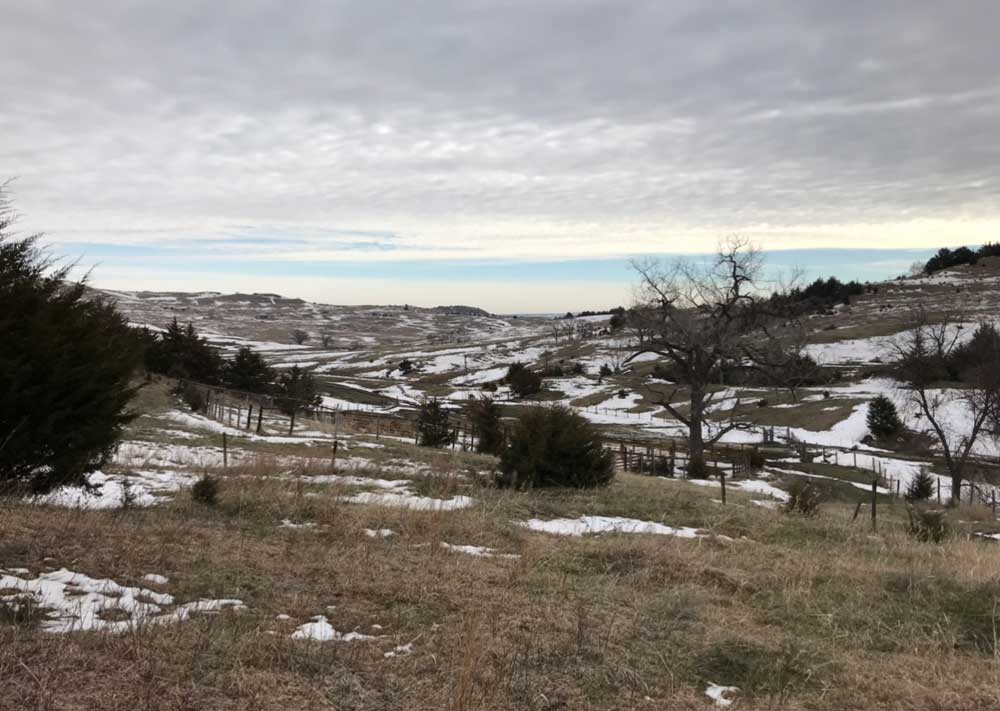
While a Merriam's won't mind heading to the open prairie on the windy days, he occasionally wants to get out of it and will retreat to the creek bottoms to get some relief. It is amazing how some of those draws will be almost perfectly calm on the windiest of days there.
Don't rule out working the high edges of the canyons and draws, though, even on the high-wind days. Throwing calls out into the open prairie can pull in a surprise from time to time. I have seen gobblers trying to strut in the wind while their fans blew over their heads. It's comical.
Oh yeah, one more piece of advice; hold on to your door when you get out of the truck. The South Dakota wind will put it on your fender if you don't, sometimes.
A Tag on the Leg: Putting a tag on a South Dakota Merriam's can be a test of endurance, patience, woodsmanship and general turkey hunting ability. It can also be easier said than done.
When hunting the Missouri Breaks in South Dakota you have to adapt constantly to the weather and the terrain. The terrain, regardless of the weather, can change in the middle of a hunt. You might strike a bird out in the prairie only to have him drag you into a steep canyon. I have chased birds up and down both sides of a single draw, multiple times, before finally getting to a setup he was willing to die in.
The bottoms in the draws can be relatively easy walking but they can also afford a bird the opportunity to see great distances, so don't just go strolling along in plain view. It will definitely cost you an opportunity if you do. Use every tree, every bush, every bend of a creek to conceal yourself from a turkey that could be right in front of you. Also don't forget to watch the high banks and knobs high above the bottoms that are commonly used as strut zones. They can see an awful lot of the bottom you're in from those places.
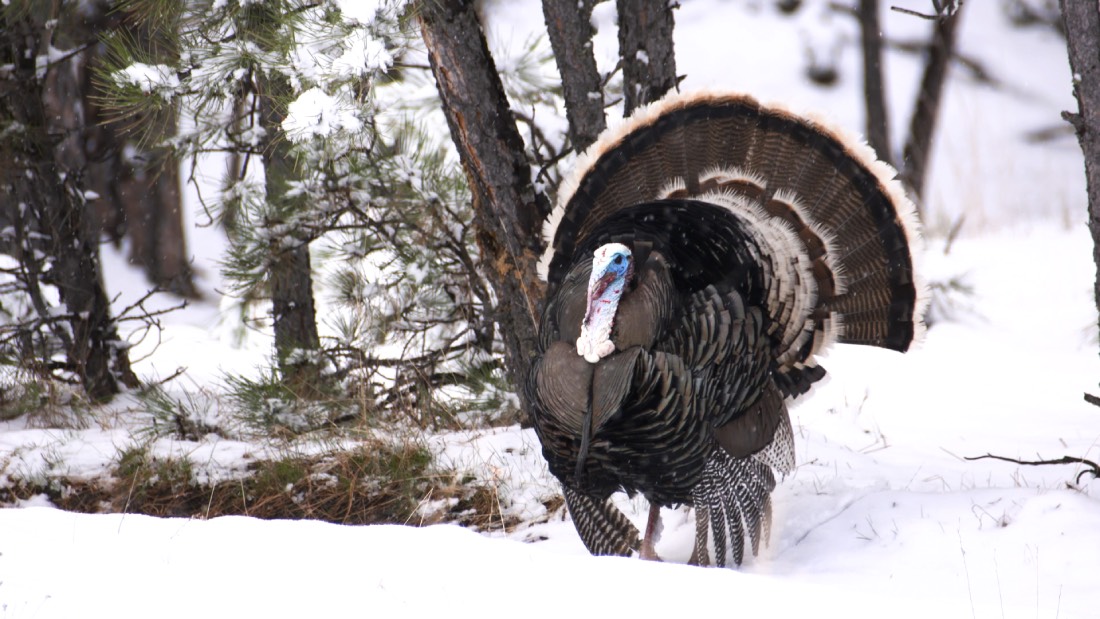
If you choose to hunt from above the bottom, stay in the tree line, even if it means going up and down the terrain to stay in the cover. Cutting across the openings to get from one finger of trees to another that stretch out of the bottom is an absolute no-no. Be sure to pay attention to the openings on the opposite side of the draw as well. You will bust birds without ever knowing they were there until after the fact if you're not careful.
Merriam's like to gobble at all times of the day. Obviously, they will be more vocal in the mornings and evenings, but if you are fortunate enough to have a day where the wind is low and the sun is shining, don't be surprised to get into it with a mid-day loudmouth. When you do, give him time to show up, regardless of the distance he is from you. Hunting open prairie gives you the opportunity to watch birds from great distances and I have seen Merriam's cover unbelievable distances to reach a setup. Take your time and carry some good binoculars. They are a necessity in the Breaks and will be a tremendous asset to you there.
If he wants to meet you, he won't mind the walk. Inevitably though, you will be required to put some miles on the boots. I highly recommend being in good shape before heading to South Dakota to hunt turkeys.
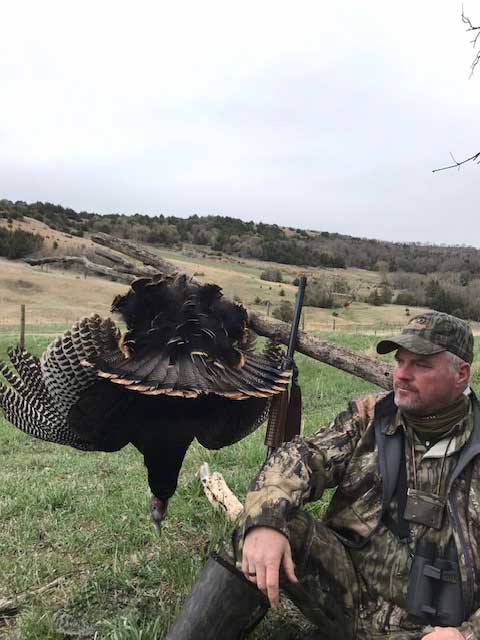
When everything comes together and the moment of truth approaches, make sure the bird is in range before you squeeze the trigger. There is not much that is more deflating than misjudging the distance on a bird and watching him run or fly to unknown parts at the sound of your gun. I have watched more than a few clients dismiss a bird due to yardage miscalculation in the prairie. The birds always seem to be closer than they are in open ground and there is lots of it there. If you struggle with judging distance, work on improving your ability to do so before you head to the prairie. Range finders are good, but unless you have a point of reference, which can be hard to find sometimes when there is nothing but grass in front of you, they aren't all that valuable. Most birds won't put up with anyone trying to range them before they shoot.
When the chance comes along to hunt Merriam's turkeys in the Missouri Breaks of South Dakota, jump on it. Leave the preconceived notions at home and be prepared to experience some of the finest turkey hunting anywhere.
Sharing all of this with you reminds me of a client I had some years back. I had worked a bird for over an hour in a battle in which he had thoroughly thrashed me. When the bird finally faded back down into the canyon below, my client turned to me and said, "Dang, DJ, I though Merriam's were supposed to be dumb." I nearly spit my diaphragm out and replied, “They're just turkeys, man.
I can assure you this though, the whippings that a Merriam's turkey gives you is no less painful than the one you will receive from an Eastern or an Osceola or a Rio Grande."
Just go. Enjoy some of the finest scenery you will ever hunt, some of the best turkey hunting in the country, and you just might overcome the challenges of The Breaks while you are there.

